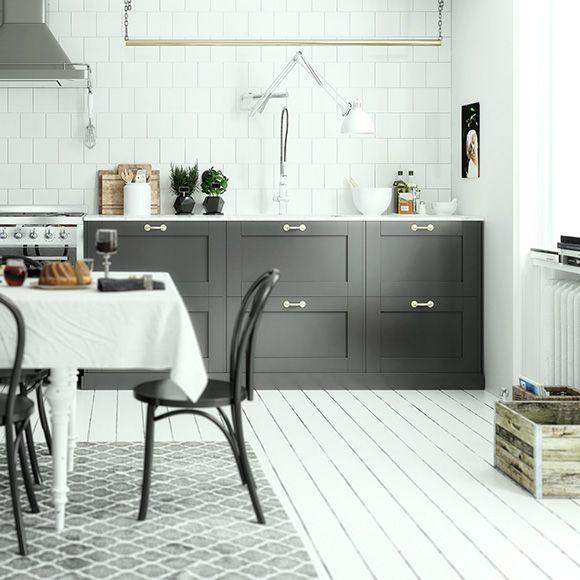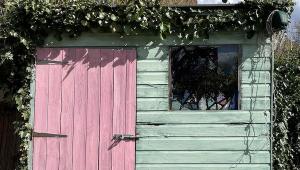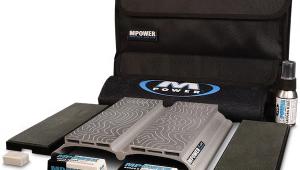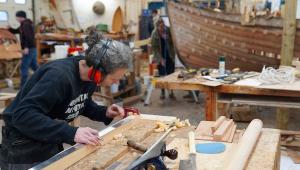Get the modern farmhouse look for your kitchen

Neutrals in farmhouse kitchen schemes work beautifully. You can group together textures, accessories and finishes either in light neutrals or darker tones to create the style's 'casually pulled together' effect. A rustic feel, combined with modern farmhouse living, is a look that's extremely popular at the moment.
Grey shades are ideal – instead of painting all cupboards and cabinets in the same shade, think about using different greys for two or three surfaces. This will help to achieve the impression of a collection of unrelated pieces of furniture that's characteristic of a farmhouse kitchen. The effect will be cohesive, but more charming than formal. Consider painting your wall tiles in white to create a light and airy look to the room, which will form a backdrop for utensils and accessories.
Seek out a satin finish paint specifically formulated for cupboards and cabinets: you won't be able to achieve a good result using just any paint. Pick one requiring no undercoat, which has been specially developed to renovate high traffic surfaces. The correct combination of polymers will result in a paint that's extremely durable and resistant to culinary and domestic stains. It should allow regular and easy cleaning without altering the colour and finish of the paint. Look for paint that may be used on new or old kitchen furniture, which is suitable for use on raw, varnished or painted woods, melamine, laminate, kitchen tiles, plaster and glass so that pretty much all bases are covered.
Finally, your chosen paint should be easy to apply, requiring no more than three tools: a paint stirrer or wide stick, a 4-5mm short pile roller, and a round-edged paint brush for tackling angles, corners and finishing.
V33 Renovation Cupboard & Cabinet paint, available from B&Q, fulfils all of these requirements, and is offered in a range of neutral shades, including three shades of grey, formulated for use by the experienced or novice DIY-er. It's priced at £25 for a 750ml tub, which provides 10m2 of coverage.
PreparationPreparation of surfaces is essential in order to achieve a good quality finish. We recommend washing the surfaces in question with a soda-based or sugar soap - alkaline -cleaner. Varnished wood, painted wood and melamine should be washed, rinsed thoroughly with water, left to dry, then lightly sanded with 240 grit abrasive, before removing any residual dust. Laminate, wall tiles and glass should also be washed and rinsed thoroughly with water and left to dry. Raw/porous surfaces such as wood and MDF should be lightly sanded before removing residual dust. On raw oak and chestnut, an appropriate undercoat should first be applied to block tannins.
ApplicationThe paint should be applied at room temperature between 12 and 25°C, avoiding draughts. First, stir the paint with a stirrer or wide stick, working around the bottom of the tin to mix it well. Projects should be started by painting the angles, mouldings and joints of the surfaces involved. Work should be carried out on small surfaces at this stage.
Next, follow with successive cross strokes. A second coat shouldn't be started while the first is still drying. Leave to dry for six hours, not exceeding 12 hours, before applying a second coat in the same way. A third coat may be required, depending on the surfaces and colour.
Once completed, a gentle detergent and a non-abrasive sponge should be used to keep painted surfaces clean. Optimum product performance and adhesion are achieved after 20 days of application. Completed surfaces should therefore be treated gently, avoiding direct impact, abrasion, staining or cleaning for the first 20 days after application.
For more information on V33 and its range of products, visit www.v33.co.uk.
- Log in or register to post comments








